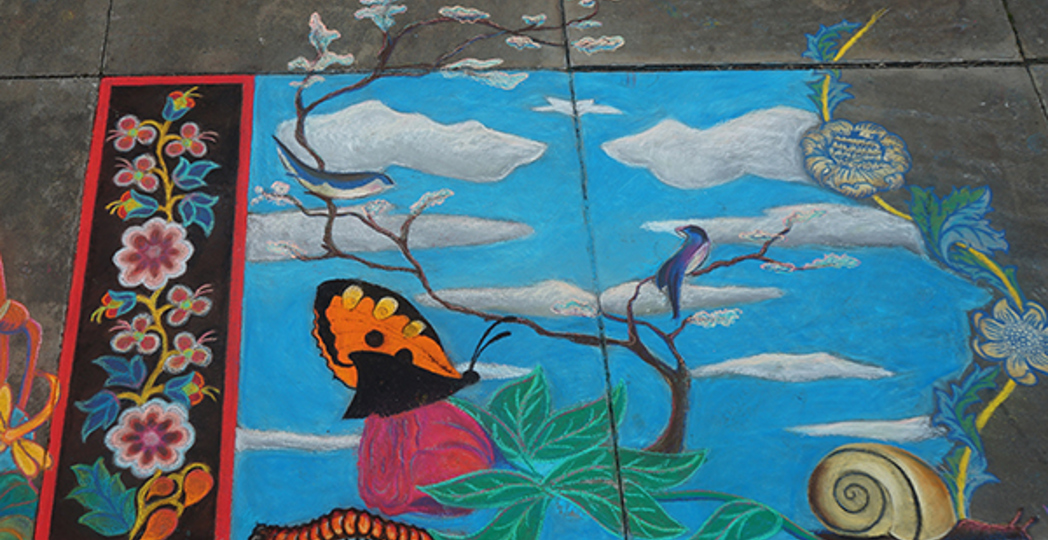Chalk Up A Masterpiece With These Sidewalk Art Tips
by Abigail Cloutier | Jul. 1, 2020 | 11:00 AM

Courtesy Cleveland Museum of Art
Dust up on your chalk art skills this summer with these three tips for sidewalk masterpieces from Robin Heinrich, the artistic director at the Cleveland Museum of Art. CMA’s annual Chalk Festival may be canceled this year due to COVID-19, so take to your own pavement with these childhood favorites for a socially distant alternative.
Use soft pastels. Instead of gritty, unwieldy sidewalk chalk, Heinrich suggests trying soft pastels. Available at most art stores, they’re water-soluble and yield deeper colors. Try layering color by rubbing a piece foam over a drawn section to really press the pigment into the concrete, and then layer another shade on top. Or, mix a bit of pastel with water and use a paintbrush to create sidewalk watercolors. “Use your fingertips to really define some details,” says Heinrich. “[Use] the technique of smudging for the finest detail.” Just remember — don’t use oil pastels: they don’t wash away.
Abandon perfectionism. If you do make a mistake, it’s easily cleaned up with water and a sponge — which means it’s more than OK to get your kids involved. “Kids naturally know what to do,” says Heinrich. “They get on the ground and get messy. Getting messy is naturally a part of chalking.” If you’re really worried, use paper to protect areas you don’t want smudged.
Find some local inspiration. If you can’t think of anything to draw, put on some music and take cues from your surroundings. Draw some local flowers, a house in your neighborhood, or your pet dog. “You could even go on a museum’s website and find an artwork that you’re inspired by,” says Heinrich. “See how you might interpret it yourself.”
Trending
-
1
-
2
-
3
-
4
-
5










